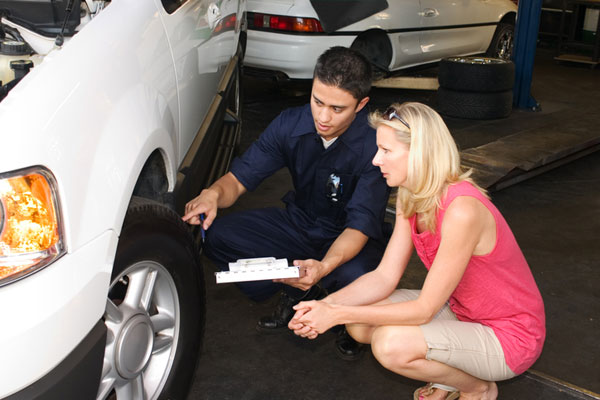4 Tips for Upselling in Fixed Ops

Article Highlights:
- Use these tips for a more effective and profitable fixed ops department.
- "...the real challenge comes from actually doing the selling."
Look at the number of customers who visit your parts and service departments each day. Now compare that number with your sales floor traffic. Most days, up to 90% of your total store traffic is in fixed ops. You spend time training your sales department on how to present a vehicle, but do you spend time training your service advisors to spot upsell opportunities?
This basic skill is essential for success. When I’m working with a dealership that needs to get back to the basics in fixed ops, I ask an important question: What measures will ensure effective selling to parts and service customers?
Most dealerships understand the importance of upselling in fixed ops, but the real challenge comes from actually doing it—spotting areas of opportunity and presenting them to the customer. If you don’t master these basic skills, your fixed ops department won’t be as effective and profitable as it could be.
If upselling in fixed ops falls under the category of “needs improvement” for your dealership, make sure you consider these four tips:
Conduct the Walk Around WITH the Customer
Advisors should invite customers to participate in the walk around. This is a time of discovery for the customer because she sees her vehicle all the time and can become blind to areas that may need attention. This also engages the customer and puts her in decision-making mode. Look for things that can easily be replaced, such as panels and trim pieces. If the customer declines replacement during the walk around, include estimates with the receipt. Customers can always reconsider. Don’t forget to record any declined services so you can market to those customers later.
Always Explain WHY Routine Maintenance Is Necessary
Never give the customer a list of recommended maintenance items and wait for a “yes.” Explain the value of the suggested maintenance repairs. For example, an advisor could explain, “If you don’t align your tires soon it will cause the rear tires to wear faster. We can do an alignment for you today to make sure those new tires last.” Remember to be open and honest; you never want to present a service to the customer they do not need.
Explanations like this may sound like a no-brainer, but oftentimes advisors stop at the first “no” they hear. According to J.D. Power, 47% of customers will buy recommended service if simply offered. A little persistence might be all that’s required to capture a new sale. Are your advisors prepared to overcome objections?
Keep Post-Inspection Reviews Personal
After the technician finishes the preliminary inspection, inform the customer of what else needs work. Conduct the review away from the waiting area. I recommend this for two reasons:
1) It blocks out distractions so the customer can focus on the report.
2) It ensures other customers in the waiting area won’t hear the same pitch repeatedly until it’s their turn.
This strategy shouldn’t disappear for customers who drop their vehicle off and skip the waiting area. Send a text to these customers to let them know what you’ve found during the inspection. Make an offer based on those findings right then and there. Texting is convenient for busy customers and it ensures you don’t miss out on a potential sale.
*Pro Tip: When reviewing the inspection with the customer, classify your recommendations into categories: recommended, necessary, and absolutely necessary. Options will make the customer feel empowered while giving her perspective on the current state of her vehicle.
Give Labor Estimates With Parts Estimates
Customers that call for a part estimate should ALWAYS receive an estimate for a certified professional to install the part. I’ve seen countless parts departments miss golden opportunities by selling a part without offering installation as well. The bottom line: your parts department needs to be prepared to sell service whenever a customer orders a part directly from the dealership.
Now Start Upselling
Instead of upselling parts and service, most fixed ops’ employees prefer to do what they do best—repair vehicles. However, the art of selling is crucial to compete in the fixed ops world. A little bit of training goes a long way. When you think about it, the more you sell, the more work you get. That sounds like a winning recipe to me.
For more information on training and system utilization improvement, contact Reynolds Consulting Services at 800.657.9784 or send us an email, consulting@reyrey.com.
Related Articles:

Frustrated Customers, Overloaded Employees: The True Cost of Outdated…
Since hanging up my hat as a service advisor in 2005, I can’t help but notice how little has changed in the way dealerships handle…

Streamlining Vehicle Service Contract Claims
When talking to service advisors one pain point consistently rises to the top: Vehicle Service Contract (VSC) claims. The process includes lengthy phone calls, repetitive…

Does your S-P-G have the F-L-U?
Are you service pricing guides fully utilized or have they come down with the flu?

3 Recall Scares to Avoid
Three recall tips to help you avoid spooky fines and lost service business.















